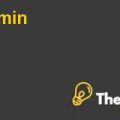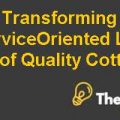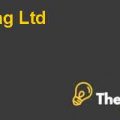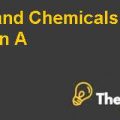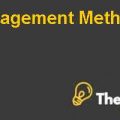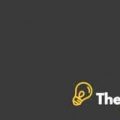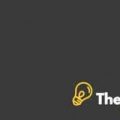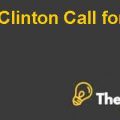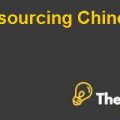
Problem Statement
Sterling is about to acquire a company which is in a different industry from which Sterling already operates. Every industry has its associated business risk and due to that every industry has its own asset beta which reflects the industry risk. Sterling has no experience in this sector. However, the unsystematic risk affects all industries in a same way, such as inflation. Sterling’s market growth is declining and it has to find a right business strategy to recover its market share back again.
Discussions
Cost of equity capital and WACC
The cost of equity capital for Sterling is estimated to be 8.3% (3.1 + 5*1.044). This figure has been calculated using the capital asset pricing model incorporating risk free rate of return, market risk premium and the relevant equity beta of Sterling. The risk free rate of return represents US T-bills. The equity beta is derived from two sources. One is the new financial structure of Sterling which increases debt to 30% of total capital employed and represent financial risk faced by Sterling. Second is the asset beta of the new industry in which Sterling has invested.
However, the asset beta of 0.73 is used directly to calculate equity beta of 1.044 ignoring the sales ratio as to how much percentage sales Sterling would generate from its existing business and how much from the new unit. This ratio would help to calculate the average asset beta of Sterling which will then be used to calculate its equity beta.
The correct capital structure that should be used in evaluating is the new capital structure of Sterling. It is so because the old structure does not represent the correct ratio of debt and equity to be used for future discounting of the projects or businesses.
Weighted average cost of capital is 6.8%. This rate is based upon the new capital structure of Sterling and the revised cost of debt capital of 5.1%. The revised rate of debt capital increases because the financial risk of Sterling has increased because of additional debt capital.
Acquisition of Montagne’s unit
The free cash flows from 2013 to 2022 have been calculated based upon the financial information given in exhibit 5 and 6. It is assumed that all cash flows will occur at the respective year end. The free cash flows exclude the amount of depreciation charge for the year since it is a non-cash item. It is assumed that all the net sales, manufacturing, selling, administrative, research and development expenses are incurred in the same year and are paid in cash. All these assumptions are carried forward in the forecasting periods 2013-2022 as well. Forecasting from year 2018-2022 is based on the growth rate in sales of 5% as specified and from which the operating margin of 19% is calculated which is then used to calculate forecasted cash flows. It is assumed that the growth in working capital will be same percentage for years 2018-2022 as in year 2017.
The terminal value of the unit for the 10 years 2023-2032 is calculated using the multiplier factor of 9 to determine the cash values generated in the later years. The multiplier factor is used because forecasting for such great period ahead would not be accurate as constant growth for such long time is not possible. Therefore, 9 is multiplied with the free cash flows of year 2022 to determine the expected cash flows in the later 10 years. The terminal value is $240 million in 2022 which is discounted back. This technique is similar to PE ratio that is used to calculate the value of businesses by multiplying the PE factor with the free cash flows.
The NPV of the base investment is calculated by discounting all the forecasted cash flows with the WACC of Sterling which was calculated on its new capital structure and also considers business risk of this new industry. The amount paid for acquiring the unit is $265 million and by deducting the present values of future cash flows gives a positive NPV of $12 million (Excel – NPV Base). The business unit is financially acceptable based on the decision of NPV.
Follow – up Expansion
The value of the follow up expansion will be based upon the difference between the amount of additional money invested and the additional cash generated because of that. The additional amount that is to be invested is $60 million, which will expand the products unit and by installation of new capital equipment during 2013. For calculation purpose, it is assumed that the amount is invested at the end of year 2013. 2014 cash flows are used to anticipate additional cash flows for the future, for first year. The 30%/40% ratios are applied on respective cash flows and hence additional cash flows are estimated. The 40% ratio is used after considering future prospects regarding the demand for health care products and it is assumed that all the operating expenses for the forecasted period will be in the same ratio as they were before. Due to that it is also possible to estimate operating profit margin of 19% for the coming years.................

